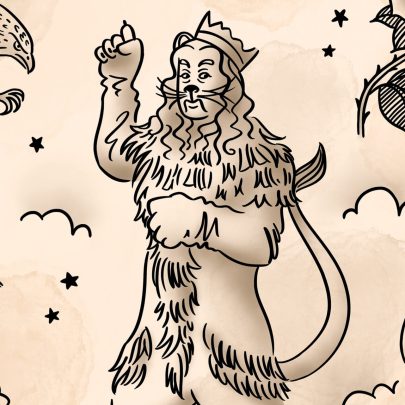Oct 5, 2015 Theatre
Illustration: Joseph Qiu
This article was first published in the October 2015 issue of Metro.
Who among us has not attempted a Shatner impression? His name is synonymous with chewing scenery. For Shatner-speak, just add a. Full. Stop. After. Each. Word. But it almost didn’t happen.
Star Trek, now an indelible part of popular culture, ran for only three seasons. The actors got no residuals, and by the early 70s, the former Captain Kirk was living out of a pickup truck with his dog, scraping a meagre crust from summer stock theatre. Working among actors still hoping for their big break, Shatner had had his and it had sputtered out like a faulty phaser.
It had all begun with so much promise. In the 50s, he’d cut his teeth on Sophocles and Shakespeare, worked steadily on Broadway and landed his first major film role opposite Yul Brynner in The Brothers Karamazov. But Shatner’s motto was “Work is work”. He accepted roles without much of an eye towards curating his career, a philosophy some say warped his chance of becoming a legitimate acting star.
From the pickup truck to celebrity game shows where careers go to die, and on to supermarket ads where they actively decompose, he was headed where many had gone before and from where few had returned.
But Star Trek was gradually finding a new life in reruns. By the mid-70s, fans were throwing conventions, and although Shatner found the burgeoning Trekkie behemoth perplexing — he famously told his fans to “get a life” — it ultimately led to a resurrection of the Starship Enterprise, a decade after it was cancelled into oblivion, in the Star Trek films. By then it was done: William Shatner was an icon.
On a bridge staffed with outliers such as Spock, Uhura, Chekov and Sulu, Shatner could have faded into a beige figurehead. Instead, transcending his all-American (Canadian actually) male beauty, he imbued James Tiberius Kirk with depth, wry humour, pathos, bravery and a distinct curiosity — in short, character. His Kirk was a decisive leader, a balletic brawler and a po-faced lover.
Absurd, possibly. But how could anyone have played Kirk without walking that fine line between agonised expressionism and self-parody? Kirk was a virile 60s swinger who could really pull off a mustard sweater, and if all those green-haired alien beauties are to be believed, he did just that on a regular basis. Kirk came in peace all over the universe.
Shatner would later become TJ Hooker and then the beloved Denny Crane. He recently sold his kidney stone for charity, raising $75,000. He has written bestselling novels and recorded spoken-word albums, each a work of bewildering art. Who else could produce a rendition of Rocket Man at once so brilliantly self-aware and yet so startlingly ill advised?
Surpassing all this is Shatner himself. It’s not that Shatner will forever be Kirk. Kirk, whatever his qualities as a Starship captain, will always be William Shatner. Bill Shatner is larger than life, a legend of pop culture, ultimately greater than the sum of his parts.
Shatner’s World – We Just Live In It: Aotea Centre, October 10, ticketmaster.co.nz





